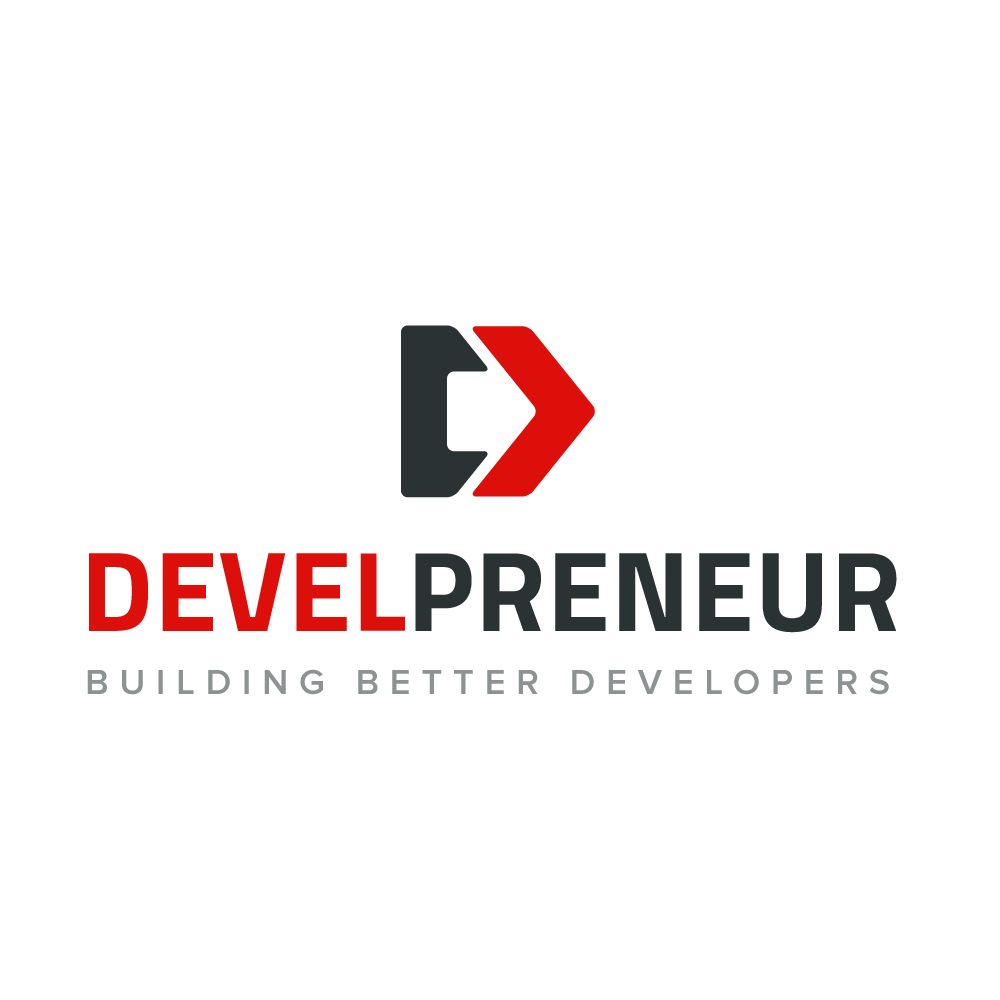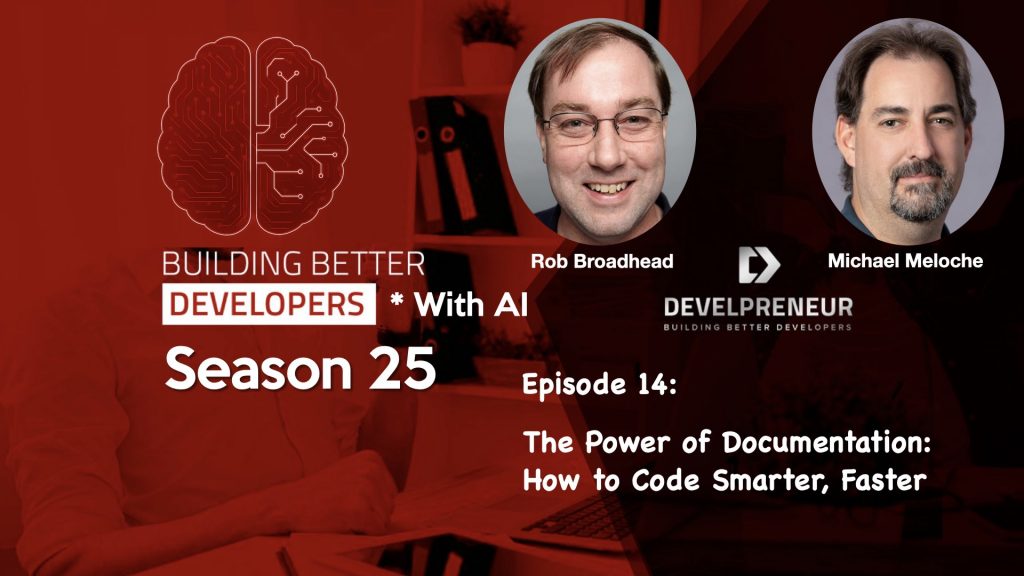In this episode of the Building Better Developers with AI podcast, Rob Broadhead and Michael Meloche revisit a popular past topic: the power of documentation. Instead of repeating the same points, they used ChatGPT to surface fresh talking points and spark a new conversation.
This wasn’t about using AI to generate documentation, but using it to revisit, reflect, and dive deeper into the value of documenting your development work. The result is a renewed appreciation for one of the most overlooked parts of software development—and how to make it better.
The Power of Documentation: Why We Resist, But Still Need It
“Good documentation might not get noticed—but bad or missing documentation definitely will.”
Most developers avoid documentation. It’s viewed as:
- Time-consuming
- Low ROI
- Secondary to writing “clean code”
But as Rob and Michael explain, the power of documentation becomes obvious when someone new joins the team, when you return to your own code months later, or when something breaks in production. Without documentation, your project becomes fragile—even dangerous.
Using AI tools like ChatGPT or Copilot can help kick-start outlines, clarify intentions, and even summarize logic to make documenting easier.
The Power of Documentation in Planning: Comment-Driven Development
“Don’t just write code—write your thinking process.”
One of the key strategies Rob shares is comment-driven development. Start by outlining your logic and workflow using plain-language comments or pseudocode. This mirrors how many AI tools generate code: from your intent to executable logic.
Michael supports this with a reminder that self-documenting code—through clear naming, logical structure, and readable syntax—is also a form of documentation.
Helpful tools:
The Power of Documentation as a Force Multiplier
“Documentation doesn’t just explain—it accelerates.”
Rob and Michael stress that the power of documentation isn’t just about code comments—it’s about velocity, quality, and reliability. Good documentation:
- Speeds up onboarding
- Reduces bugs and confusion
- Enables DevOps and automated testing
- Clarifies communication across teams
Tools like Swagger and Postman transform API docs into live interfaces—letting you test endpoints, view examples, and generate clients with ease.
The Power of Documentation: What It Costs to Skip It
“If you don’t write it down, it walks out the door with your last developer.”
Michael shares stories of undocumented systems that became impossible to maintain when key developers left. Even worse is documentation that exists—but is never updated.
Best practices:
- Keep docs near the code (e.g., Markdown in repo)
- Automate updates with tools like MkDocs
- Treat documentation like testing: part of your done definition
Pro tip: Add documentation as a checklist item in your development tickets. Don’t consider a task complete until it’s explained clearly.
The Power of Documentation in Practice: Where to Start
“Every project deserves a README, a runbook, and a little foresight.”
Rob and Michael outline the foundational documentation every project should have:
- README.md — Overview, build/setup steps, key dependencies
- Code comments — Especially around complex or non-obvious logic
- API documentation — Inputs, outputs, examples
- Architecture diagrams — System design and flow
- Runbooks — Deployment, recovery, and incident response
- Testing strategy — How to verify features and stability
These documents preserve the power of documentation and ensure long-term maintainability, even as teams and tools evolve.
Developer Challenge: Take One Step This Week
Your challenge from the episode:
Pick one area of your project—just one—and improve its documentation this week.
Update the README. Create a runbook. Add clear inline comments to a tricky method. If you’re not sure where to start, use AI to outline your intent or help create a checklist.
Tag your results with #DevDocChallenge and share how you’re strengthening the power of documentation in your work.
Final Thoughts: Let AI Inspire, But Let Documentation Lead
In this episode, Rob and Michael didn’t use AI to do the documentation. They used it to start a better conversation about why it matters. The power of documentation is timeless—but now we have better tools and habits to make it sustainable.
If you want to build code that lasts, supports teams, and scales with confidence—make documentation part of your strategy from day one.
Callout:
Build smarter. Build clearer. Embrace the power of documentation—your future self and your team will thank you.
Stay Connected: Join the Developreneur Community
We invite you to join our community and share your coding journey with us. Whether you’re a seasoned developer or just starting, there’s always room to learn and grow together. Contact us at [email protected] with your questions, feedback, or suggestions for future episodes. Together, let’s continue exploring the exciting world of software development.
Additional Resources
- Organizing Business Documentation: A Critical Challenge for Entrepreneurs
- Test-Driven Development – A Better Object-Oriented Design Approach
- SDLC – The software development life cycle is simplified
- Using a Document Repository To Become a Better Developer
- The Developer Journey Videos – With Bonus Content
- Building Better Developers With AI Podcast Videos – With Bonus Content

